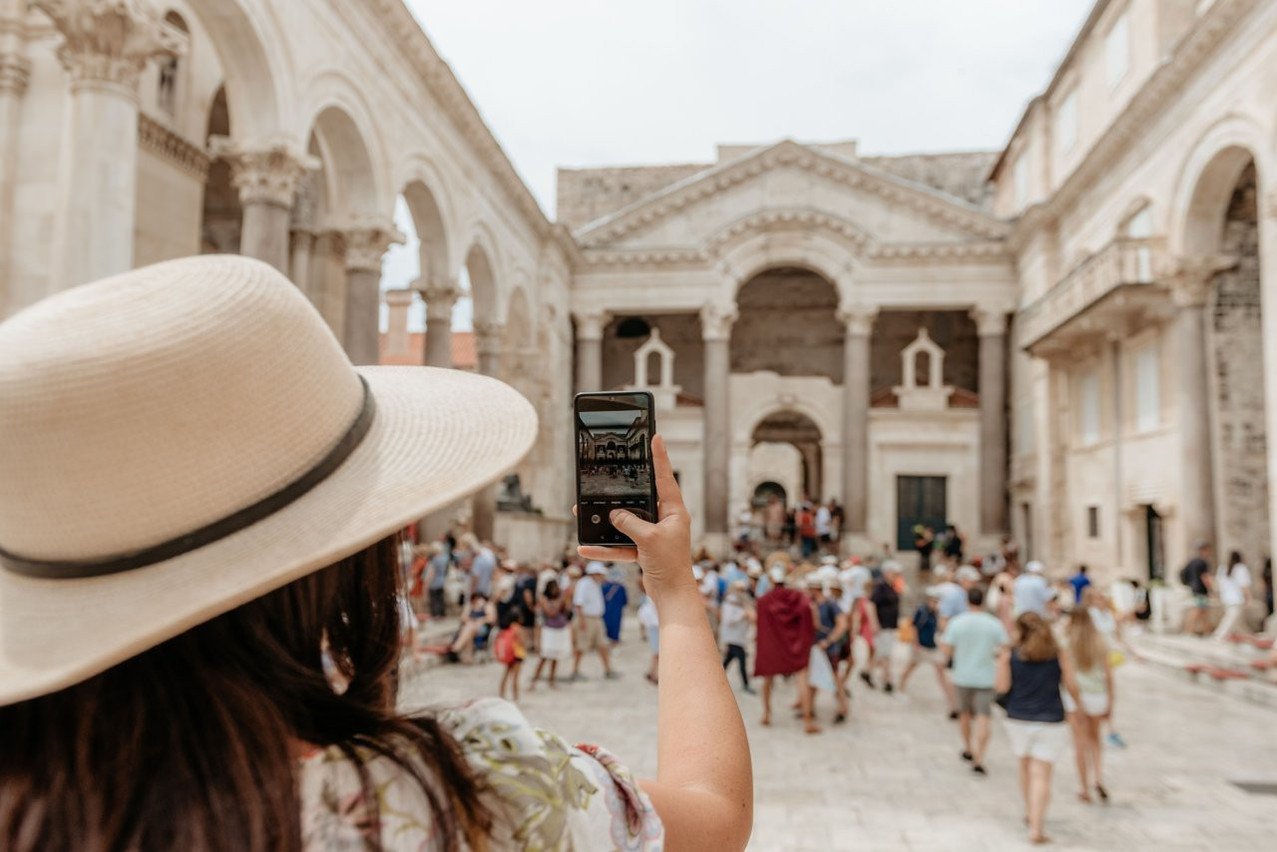5.5
“Luxembourg residents are among the biggest consumers of tourism in Europe,” notes Statec, which has published the 2024 edition of its at the height of the summer season. With 5.5 stays per resident, the country ranks third behind Sweden (9) and Finland (7). By comparison, the French make around four visits a year, compared with around three for Belgians and two for Germans. Luxembourg is also the European champion for the number of overnight stays, with around 35 per resident per year.
-12%
While leisure tourism has returned to its pre-covid crisis cruising speed, the same cannot be said for business tourism. In 2023, business tourism by Luxembourg residents will be 12% lower than in 2019. “Residents are travelling less because the professional world has evolved towards other ways of communicating and training,” says Statec. “In addition, inflation has undoubtedly slowed the recovery, as have other factors such as ecological concerns and cost-cutting.”
17%
This is the proportion of Luxembourg residents who did not take any trips last year. This includes more than a quarter of those aged 65-69 (27%). “This level has been stable for around ten years,” the statistics institute points out. Unsurprisingly, the lower the standard of living, the less people travel: 26% of people with an income in the lowest quartile did not go away last year, compared with 8% of those in the highest quartile.
92%
Europe is the preferred destination for Luxembourg residents, 92% of whom chose more or less neighbouring countries for their holidays. This figure has remained stable for 25 years. France is favoured by 20% of them, ahead of Germany (12%), Belgium (9%) and Portugal (8%).
More than one in two (55%) chose a city break, compared with 30% for the seaside and 25% for the countryside. The mountains attracted just 12% of residents.
52%
More than one in two residents (52%) chose to go on holiday by car last year. Air travel is the second most popular mode of travel (35%), well ahead of rail (less than 10%). However, air travel is down five percentage points compared to 2019, the last year before the pandemic.
On site, 43% of tourists prefer hotel accommodation and around 12% rent a house or flat. But more than a third (35%) choose to stay for free with friends or family.
€1,190
That’s how much was spent on holidays per resident, and per trip, last year. This figure is stable compared to 2022, which was the year of a strong post-covid recovery. This sum breaks down as follows: 40% was spent on food, local activities and shopping, 34% on accommodation costs and 26% on transport.
In total (2022 figure), Luxembourg residents spent €3.381bn euros on their travels, up €89m euros on the previous year.
7,742
The number of rooms available in the 211 hotels, hostels and pensions in Luxembourg. There are also 69 campsites with a capacity of over 38,000 people, 29 stopover gîtes and nine youth hostels. In 2023, 1.4m tourist arrivals were recorded in these accommodations, “an increase of 9% compared to 2019, which is equivalent to almost 130,000 more arrivals,” according to Statec.
87%
The proportion of tourism in Luxembourg accounted for by foreign visitors. The Netherlands (271,000 arrivals), Germany (230,000) and Belgium (228,000) are the three countries most represented. Tourism from Asia, on the other hand, has fallen sharply compared to 2019 (-47%). Local tourism, which accounts for 13%, remains stable compared to the previous year (180,000 arrivals).
€4.246
In billions of euros, total spending in the country by resident and non-resident visitors in 2022 (last known figure, +13% compared with 2021), including €3.756bn by non-residents. “Spending by non-residents in 2022 exceeded its previous record level in 2019. Spending by resident visitors is higher than in 2021 and almost reaches its 2018 record level,” says Statec.
“Resident visitors spend more on catering than non-resident visitors (34% for resident visitors and 26% for non-resident visitors). The opposite is true for accommodation (33% for residents and 41% for non-residents),” adds the statistics bureau in its report.
40,421
The number of jobs in the tourism sector passed the 40,000 mark for the first time in 2022, up 6% year-on-year. Just under half (46%) of these jobs are in the catering industry.
On the other hand, tourism’s share of GDP is eroding. It will be around 0.7% in 2022, compared with around 1% before the covid pandemic.
This article was originally published in .
